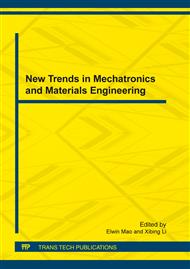p.32
p.36
p.41
p.47
p.52
p.57
p.61
p.66
p.70
Retarded Modes of Lateral Ferromagnetic/Ferromagnetic Superlattice
Abstract:
In this paper,we calculated the retarded modes of semi-infinite lateral ferromagnetic/ ferromagnetic superlattice with the effective medium theory. Take the Co/Ni system surface modes and bulk modes for the superlattice as the example and found some interesting properties which different from the lateral ferromagnetic/nonmagnetic superlattice. Lateral magnetism/magnetism superlattice have some complex retarded modes which are very common systems,changing the ratio of the superlattice ferromagnetism layer thickness so that two branches of surface modes frequency and bulk modes frequency band can be adjusted consequently. This tailoring effect is related to the two ferromagnetism layers saturation magnetization values. But the two saturation magnetization values are quite different than each other. If the difference between the tow values is large, the tailoring effect of f1 is more obvious. When the saturation magnetization value of the second ferromagnetic medium is approach to zero, this system will become magnetism/non-magnetism superlattice. If in Maxwell equation ε=0, the retarded modes will transite to ferromagnetic/ferromagnetic superlattice magnetostatic modes.
Info:
Periodical:
Pages:
52-56
Citation:
Online since:
January 2012
Authors:
Price:
Сopyright:
© 2012 Trans Tech Publications Ltd. All Rights Reserved
Share:
Citation:


